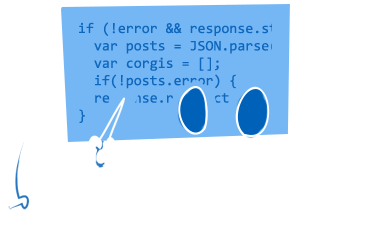We Keep It Real With Agile
All projects are built in week-long development sessions ("sprints"). The first sprint begins with a kickoff session where you, the product manager, meet with the engineering pair that will be working on your project, as well as a managing engineer. The engineers will talk to you about the product, your goals, and what features are most important to you right now. Then, the engineers take your most important features and break them down into engineering-level tickets, adding them to the ticket tracking system.
This basic process repeats at the beginning of every week, guaranteeing that you get good answers to any questions you have about how a feature should be built and how long it will take. It also means our engineers always know what is most important to you right now, so they stay focused on it.
During the week, your engineering pair is completely dedicated to your project. You will receive daily emails explaining what the engineers have finished that day. You'll also be able to test out the new features as they are completed so that we all know the final product meets your standards.
Open Communication, Clear Documentation
Here's what we don't do - get an assignment from you, disappear for eight weeks, and then hand you the keys. Sorry, but that approach always leads to problems and delays.
At Cloudspace, we insist on continuous interaction. We require that a product person with decision-making authority be present for every weekly meeting. We're not coders-for-hire that mindlessly implement specs, we need your feedback at every stage so we're always on the same page.
We also document properly, including the code and the processes for maintaining and running the system. If you decide to shift the project to your in-house people, you'll have complete information on every detail, so they can pick up where we left off and hit the ground running.

Quality Results
Every Cloudspace engineer understands our process, which we've honed since 1996 to produce results. We take the most pragmatic approach, using Agile and Lean, and pair it with the experience of having delivered hundreds of quality projects.
All of our new code is reviewed by other senior engineers on a daily basis, and is frequently deployed to a staging server for testing.
Since teaching is the best way to learn, we have an ongoing training program. We host weekly training sessions, as well as meals before and after work for the team to share new technology with each other and refine their skills.
For long-term projects, we rotate pairs at select times during the project by replacing one of the engineers in each team. By rotating engineers, we give you access to a larger team with direct product and code knowledge, while only charging for the ones actively coding. This helps you if we need to add engineers because of your business needs; we avoid the dip in productivity that normally comes from adding people to a project. This adds up to making sure you've got the skills you need, when you need them.
If you've got any questions about our process or our team, give us a call at 877-823-8808 or contact us. We'd love to hear from you.

Three Engagement Models
One Deliver Your Data
We build what you ask for. You give us the specs, we'll help you iron out the details, and after some time in the agile development womb you'll have a product you can be proud to call your own.


TwoWork in Conjunction
We work with your team to build what you need. We are just a Skype™ chat away, so working with us means you and your development team will be in constant contact with us.
ThreeBuild & Train
We build your MVP (minimum viable product), hand over the code, and then teach your engineers how to continue development.
